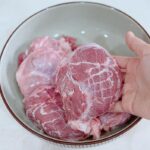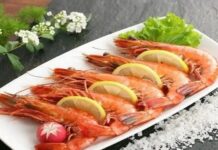Fish is a great source of high-quality protein and is low in fat. It is particularly rich in omega-3 fatty acids and vitamins such as D and B2, as well as providing calcium, phosphorus, and other minerals such as iron, zinc, iodine, magnesium, and potassium. A diet including fish can be beneficial for heart health, helping to lower blood pressure and reduce the risk of heart attacks and strokes. The American Heart Association recommends eating fish at least twice a week.
However, not all parts of the fish are edible.
**There is one part of the fish that is poisonous and should not be eaten**
The gallbladder is the poisonous part of the fish and should be avoided. Although not all fish gallbladders are lethal, they are generally not safe to consume.

Fish gallbladder contains toxic substances.
Fish gallbladders contain harmful compounds such as bile acids (steroid acids), histamine, hydrocyanic acid, and sodium carpyl sulfate. Ingesting these substances can lead to nausea, vomiting, stomach pain, and damage to internal organs. In some cases, fish gallbladders can even be life-threatening within a short period of time.
The toxins in the fish gallbladder are not easily destroyed by high temperatures or alcohol. Therefore, it is dangerous to consume the gallbladder, whether raw or cooked.
**Two other parts of the fish to consider before consuming**
In addition to the gallbladder, there are two other parts of the fish that should be approached with caution. While these parts are not poisonous, they offer limited nutritional value and are difficult for the body to absorb.
*- Fish Head***:**
Some people believe that eating fish heads can be beneficial for brain health. While it is true that fish heads contain high levels of EPA (eicosapentaenoic acid) and DHA (docosahexaenoic acid), which are important for the development of children’s brains, the protein and fat content in the head are not significantly higher than in the fish meat. Therefore, there is no significant nutritional difference between the head and the meat. Both parts offer unique health benefits, so the choice is yours.
*- Fish Scales:***
Fish scales are a source of collagen, with levels ranging from 11% to 38% in common carp, grass carp, and black carp. However, this collagen is not easily absorbed by the body. Additionally, it does not contain all the essential amino acids, so the absorption rate of collagen from fish scales is very low, providing minimal beauty benefits.
The Secret Benefits and Dark Side of Eating Vietnamese Coriander: Do You Really Know?
Vietnamese coriander, a familiar herb in many Vietnamese households, boasts a plethora of health benefits. However, like any other herb, it can also cause harm if consumed incorrectly or in excess. Unveiling the lesser-known adverse effects of this herb, we aim to empower you with knowledge to use it wisely and safely.






































